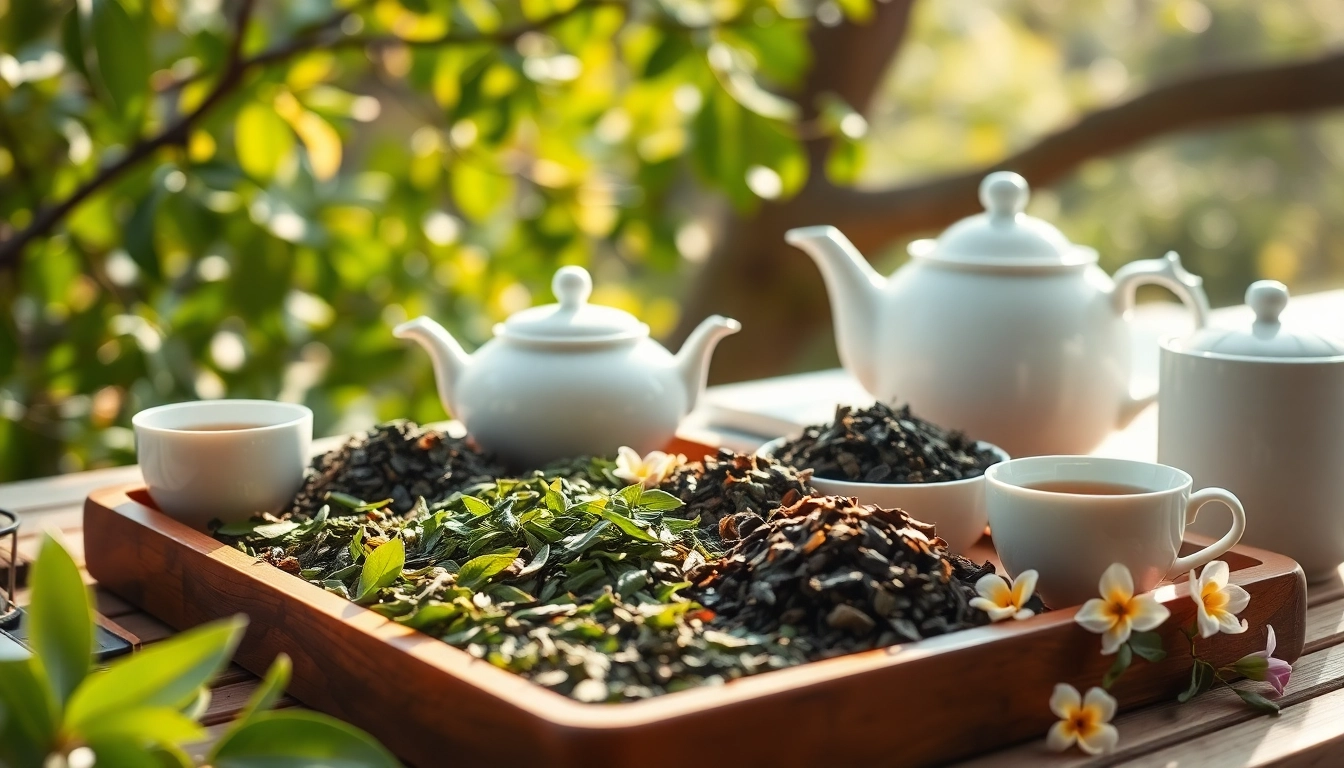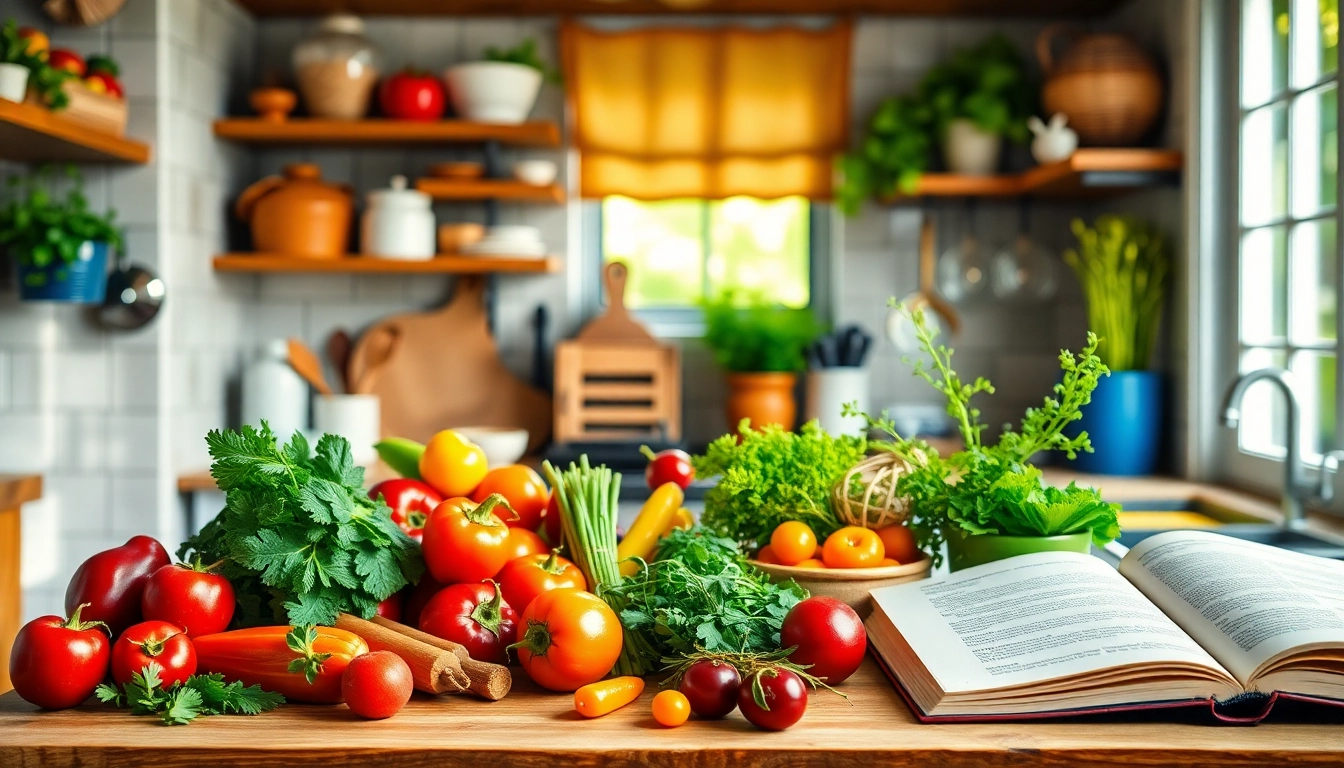Understanding Single Origin Tea
Definition and Characteristics
Single origin tea refers to tea that is sourced from a specific geographic location, typically a distinct region or even a single estate known for its particular flavor profiles and quality. Unlike blended teas, where different tea leaves from various places are mixed, single origin teas showcase the unique characteristics of their source. The flavors, aromas, and physical characteristics are directly influenced by the environmental conditions—such as altitude, soil type, and climate—where the tea is cultivated.
This type of tea is often prized for its purity and authenticity. Enthusiasts and connoisseurs appreciate it as a reflection of the terroir, a French term that encompasses the environmental factors affecting a crop. From the first sip to the last, single origin teas narrate stories about their origins, making them sought-after selections among tea lovers. For those interested in exploring genuinely remarkable brews, single origin tea offers a unique journey into flavor and culture.
Historical Significance
The tradition of single origin tea has deep roots, tracing back thousands of years. Regions like China, India, and Sri Lanka have cultivated tea for centuries, developing notable styles tied closely to their geographic and cultural histories. The legendary Tieguanyin from China or the robust Assam black tea from India are perfect examples of how historical practices have shaped the offerings of single origin tea.
Historically, the trade routes of tea were also pivotal in communicating culture and exchanging ideas. Tea was not just a beverage but a luxury item, symbolizing wealth and refinement. The production methods, rituals, and preparation of single origin teas encapsulate the essence of the culture from which they originate, adding layers of significance to each cup brewed.
Differences Between Single Origin and Blended Teas
While both single origin and blended teas have their own merits, they differ fundamentally in composition and flavor profile. Single origin teas consist entirely of leaves from one location, promoting a unique taste that embodies the nuances of its specific origin. Each tea offers a unique sensory experience based purely on its source.
Blended teas, on the other hand, combine leaves from various origins to create a balanced flavor profile that can cater to broader preferences. They often aim for consistency rather than representing a single place or tradition. For instance, while English Breakfast tea may balance flavors from several regions, a Darjeeling Tea offers distinct notes characteristic of its Nepali hill origins. Hence, tea enthusiasts tend to approach blending and single origin offerings with different expectations and preferences.
The Best Regions for Single Origin Tea
Top Producing Countries
Several countries are renowned for their exceptional single origin teas, each boasting distinct characteristics shaped by their environments. Notable producers include:
- China: Known for a diverse range of single origin teas, including green teas like Longjing (Dragon Well) and black teas like Keemun.
- India: Famous for its Assam and Darjeeling varieties, which differ greatly in flavor and aroma due to varied altitudes and climates.
- Sri Lanka: Produces well-known Ceylon teas, which offer a range of flavors depending on the elevation at which the tea is grown.
- Japan: Renowned for its matcha and sencha, which are often noted for their bright fresh flavors and vibrant green colors.
Terroir Impact on Flavor Profiles
Terroir plays a critical role in crafting the flavor profiles of single origin teas. Factors such as soil composition, altitude, and climate all contribute to the unique tastes found within each type of tea. For instance:
- Soil Type: Rich volcanic soil can yield teas that are robust and full of depth, while sandy soils may produce lighter and more delicate flavors.
- Climate: Temperature variations significantly affect the plant’s growth cycle and flavor development. Cooler temperatures often lead to sweeter leaves, while warmer regions may yield more astringent profiles.
- Altitude: Higher elevations often result in slower leaf growth, allowing for the development of more intense flavors and aromas.
Understanding these influences allows tea aficionados to choose single origin teas that align with their flavor preferences and to appreciate the artistry that goes into each brew.
On Sourcing Authentic Teas
When sourcing single origin teas, it is crucial to ensure authenticity and quality. This process involves buying from reputable producers who prioritize sustainability and ethical practices. Consumer awareness regarding the origin of their tea has grown, leading to a demand for transparency in sourcing. Look for brands that provide detailed descriptions of their teas, including the estate and region of origin. Certifications like organic or fair trade can also signify a product’s quality and ethical sourcing.
Preparing and Tasting Single Origin Tea
Brewing Methods for Optimal Flavor
Brewing methods play a vital role in maximizing the flavors of single origin tea. Here are several techniques to ensure you capture the unique characteristics of each brew:
- Water Quality: Always use fresh, filtered water for brewing; impurities or chlorine can significantly impact flavor.
- Temperature: Different teas require different water temperatures—green teas thrive at lower temperatures (160-185°F), while black teas often require boiling water (200-212°F).
- Steeping Time: Be mindful of steeping times. Over-steeping can lead to bitterness, while under-steeping may result in a lack of flavor. Generally, green teas steep for 2-3 minutes, while black teas may need 3-5 minutes.
Tasting Notes and Aroma Analysis
Tasting single origin tea involves more than just sipping; it’s a sensory experience that engages multiple senses. Here’s how to analyze your tea:
- Visual Inspection: Assess the leaves’ size, color, and form before brewing. Are they intact or broken? Are they vibrant in color?
- Aroma: Before and after brewing, inhale deeply to capture the aromatic profile. Different single origin teas will exhibit a range of scents from floral to earthy.
- Flavor Profile: As you sip, observe the initial taste, aftertaste, and any nuanced notes that arise. Does it have astringency? Is it sweet, nutty, or creamy?
Creating a Tea Tasting Experience
A tea tasting is an excellent way to deepen your appreciation for single origin teas. Gather a variety of teas from different regions and follow these steps to create a memorable tasting experience:
- Preparation: Arrange the teas based on their categories (e.g., green, black, oolong).
- Supplies: Ensure you have the necessary equipment, including teapots, filters, cups, and a kettle.
- Tasting Palette: Offer light snacks that won’t overpower the tea flavors—think plain crackers or cheese.
- Discussion: Encourage participants to share their thoughts on each tea’s flavors, aromas, and experiences.
Health Benefits of Single Origin Tea
Antioxidants and Their Effects
Single origin teas are rich in antioxidants, particularly polyphenols, which play an essential role in maintaining health. These compounds combat oxidative stress, potentially lowering the risk of chronic diseases. The various types of single origin teas will boast unique antioxidant profiles; for example, green tea is known for its high levels of catechins, while black tea contains theaflavins, which contribute to its health benefits.
Preventative Health Benefits
Studies suggest that regular consumption of tea can offer numerous health benefits, including:
- Heart Health: The flavonoids in tea may reduce the risk of heart disease by improving blood vessel function and lowering cholesterol levels.
- Improved Metabolism: Certain teas, such as green tea, have been linked to weight loss due to their metabolic boosting effects.
- Boosted Immunity: Polyphenols can enhance immune system function, making the body more resilient against infections.
Choosing Organic Single Origin Teas
For those keen on health and environmental sustainability, choosing organic single origin teas is an excellent option. Organic certification ensures that no synthetic pesticides or fertilizers were used in cultivation, contributing to an eco-friendly tea-drinking experience. Moreover, organic teas may offer enhanced flavor profiles due to the natural growing conditions and soil health.
Where to Buy Quality Single Origin Tea
Online Retailers and Specialty Stores
When searching for quality single origin teas, both online retailers and specialty tea shops can provide valuable options. Many online retailers allow customers to explore a variety of brands and styles, often at competitive prices. Specialty tea shops, on the other hand, provide the advantage of personalized recommendations and the opportunity to taste before purchasing.
What to Look for When Buying
As you venture into buying single origin tea, consider the following factors:
- Source Transparency: Ensure the retailer provides clear information about the tea’s origin, including the specific estate or region.
- Tasting Notes: Look for detailed descriptions of flavor profiles and recommended brewing methods to enhance your experience.
- Freshness: Check packaging dates to avoid stale tea.
Understanding Labels and Certifications
Familiarizing yourself with tea labels and certifications is paramount to ensuring quality and authenticity. Labels may indicate whether a tea is organic, fair trade, or sourced from a single estate. Understanding these certifications can guide you towards making informed choices while contributing positively to sustainable practices.



